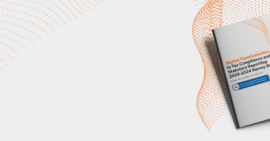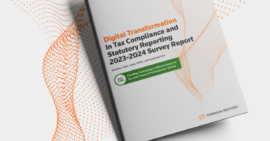The current crisis is leaving many professional workers in a state of anxiety and worry; however, firm leaders can help their team members by following certain behavioral guidelines.
Today, leaders of professional service organizations — like law firms, corporate law and tax departments, and tax & accounting firms — are intensely focused on responding to the COVID-19 pandemic. However, despite their best efforts, many leaders are telling me that their people are experiencing high levels of stress, anxiety, fear, and emotional overload. That’s not surprising, given the pace and magnitude of the changes affecting us all.
This crisis definitely has psychological consequences — specifically, it has upended our basic needs for predictability, control, and human connection, and has thereby generated enormous stress while reducing our sense of well-being.
In this two-part article, I’ll explain why and how the crisis disrupts these needs. I’ll then explain what you as a leader can do to help restore that well-being and ensure that your decisions and actions land in the best possible way.
The crisis disrupts
Any crisis creates disruption, but the disruption is usually limited to one realm or another. The COVID-19 crisis has disrupted almost every aspect of our lives all at once, and it’s done so fairly suddenly. We’re all feeling potential threats to our health, our finances, and our relationships.
While you can’t control the course of the virus and the global consequences it causes, many of you are already taking wise remedial steps to respond to the disruption, such as insuring social distancing, providing tech resources for team members that are working remotely, ensuring continuity of service to clients, increasing communication, and making sure that your people are okay.
You can join Dr. Larry Richard in an upcoming remote event, Shadows on the Shore: Managing Employee Mental Health & Morale, at 12 pm, EST on April 9
But taking the right steps is only part of effective leadership. It’s equally essential to pay attention to how you communicate and execute those steps. Your mindset, your pace, your empathy — all of these have an impact on how effective your leadership actions will be, and on how receptive your people will be to your actions. Your style and tone influence whether your people will experience predictability, control, and connection, or just the opposite.
Let’s take a look at the three needs that I’ve mentioned:
Predictability
In a crisis, people hunger for predictability. We need to know what to expect. Uncertainty is not all bad — our brains rely on it as a signal that a threat is imminent. But escalating uncertainty can trigger anxiety (which is basically fear about an unknown future). When anxiety is elevated, our ability to problem-solve and think rationally declines, our capacity to connect with others is inhibited, and our immune response is weakened. One antidote is to focus our attention on the things that remain predictable in order to provide at least some stability. Here are three examples of how to do that:
Create small pockets of predictability — Establish a regular, periodic briefing time, for example, so that people have a regular expectation that they’ll be updated about critical information at the same time each day, each week, etc. I recommend doing this even if there’s nothing new to report. Steps like this can create a pocket of predictability. Also, ensure that messaging to your people from different leaders is consistent. Nothing kills predictability like mixed messages.
Remind your people of those things that remain stable and predictable — Remind people regularly about resources that remain available and operational. When our attention is only focused on the uncertainty, it feeds fear; but if you can also re-direct peoples’ attention to things that remain unchanged, it can be reassuring.
Be a role model by managing your own fears — Role-modeling is a powerful tool, particularly in a crisis. In times of uncertainty, people look to their leaders for cues about how to react. Leaders need to remain calm, focused, and authentic. Let people know what steps you are taking, for example. And before you speak, ask yourself if others will receive your demeanor as reassuring or as alarming. Even bad news can be conveyed in a way that reassures people that you’re on top of it. Your steadiness and emotional honesty can be one of the most important ways you have to restore a sense of calm and predictability among your people.
Control
In general, most people want autonomy, that is, to feel like we exert some control — that we have at least some significant input into our lives as they unfold. We want choices. (My research shows that lawyers have an even greater need for this than does the general public.)
This current pandemic crisis has disrupted our autonomy already in a number of ways — for example, federal, state, and local governments have all issued warnings to maintain social distancing and to self-quarantine. They’ve made a number of other recommendations that limit our freedom in the name of protecting everyone’s health.
But at the same time, luckily, the crisis offers new opportunities for autonomy — if we capitalize on them. For example, many of us are working from home with the added autonomy that this practice brings.
As a leader, try to be sensitive to your team members’ need for some subjective sense of choice and control. Focus on what can be controlled more than on what can’t be controlled. Another step you can take: Give your people binary choices whenever you make a decision, instead of just imposing a decision on them. For example, you can say, “Let’s set up a call for next week — Do you want to call me? Or do you want me to initiate the call?” It may seem like a relatively trivial choice, but to a brain already in high-alert mode, lots of simple choices like this one can be calming and serve to restore a sense of control.
Even better, actively encourage your people to innovate as they work from home. Empower them to invent new ways of working in light of all the disruptive changes. One of the strengths of the U.S. culture is our penchant for taking hierarchy with a grain of salt when common sense tells us that improvisation is better. Giving your team permission to channel their inner MacGuyver can beef up their psychological sense of control just when it’s needed most.


